Science & Environment
Physicists are grappling with their own reproducibility crisis


Some claims of high-temperature superconductivity were unable to be recreated
Shutterstock / Dragon Claws
Physics is in a crisis. Over the past year, a series of research papers claimed to find evidence for high-temperature superconductors – materials that conduct electricity without losses, which could revolutionise global energy use. These were retracted after all efforts to reproduce them failed, and in some cases original data was shown to have been falsified. Now, physicists are sounding the alarm about a wider reproducibility crisis in their field.
“That is just the latest story, it is by far not the only one, or the…
Article amended on 22 May 2024
We clarified comments from Legg about the Microsoft study
Science & Environment
Swarms of miniscule drones mimicking insects being tried for dangerous human tasks
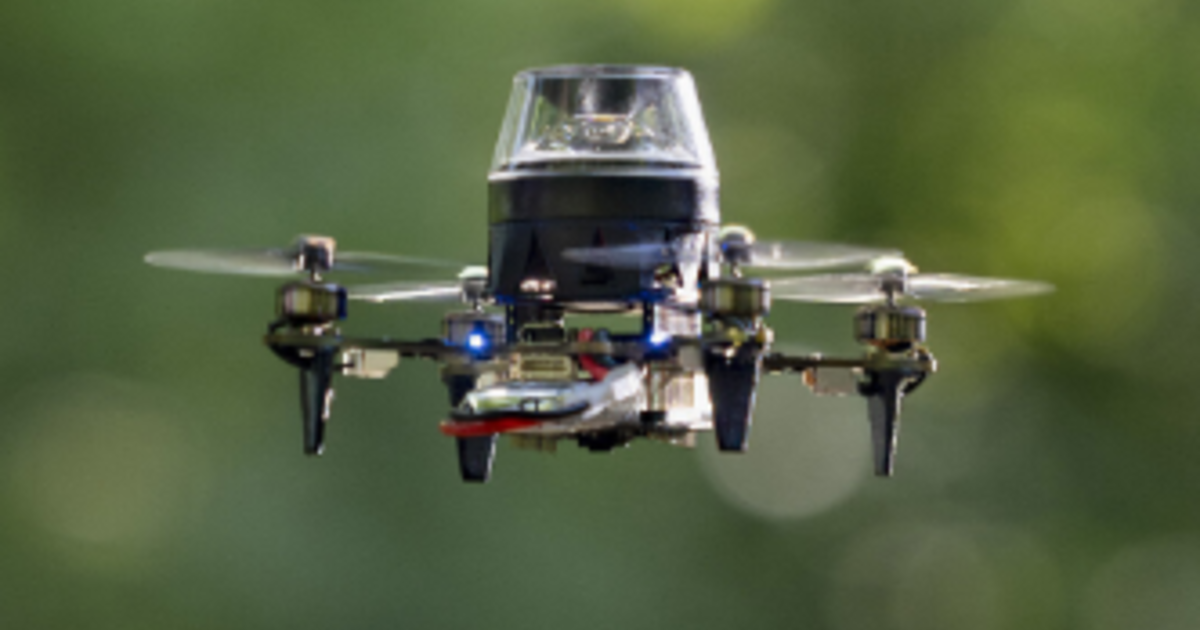
Dutch scientists have unveiled the country’s first laboratory to research how autonomous miniature drones can mimic insects to accomplish tasks ranging from finding gas leaks in factories to search-and-rescue missions.
Called the Swarming Lab, researchers at the Delft University of Technology (TU Delft) say they aim to put a “self-flying” swarm of 100 tiny drones in the air, able to perform around the clock tasks.
This includes the drones landing by themselves on recharging pods and taking off again to continue flying — without humans ever having to get involved.
“We are working not only to get these robots to be aware of one another, but also work together to complete complex tasks,” said Guido de Croon, a director at TU Delft’s Swarming Lab.
Tasks include the tiny drones — with the same weight as a golf ball or an egg — “sniffing out” a gas leak in a factory.
A swarm of autonomous drones, fitted with sensors to detect the gas, will be able to fly autonomously around the factory until one drone detects traces of the gas.
It will then follow the “scent” of the gas while “calling” the other drones to help in the search using on-board sensors.
“In the same way, drone swarms can also be used to detect forest fires or continuously help in search and rescue operations over large areas,” De Croon said.
The scientists use studies on bee and ant swarms or how flocks of birds behave to try to program their drone swarms to do the same.
“Drone swarm technology is the idea that when we look at nature and you see many of these animals, like ants, that individually are perhaps not so smart but together they do … things that they could definitely not do by themselves,” De Croon said. “We want to instill the same capabilities also in robots,” De Croon said.
Doing this, the scientists look at how birds or insects swarm “using very simple behaviors.”
For instance, birds “look at their closest neighbors in the flock and they do things like ‘oh, I don’t want to be too close’ because they don’t want to collide,” De Croon said. But “I also don’t want to be the only one to be away from the flock.”
They align with each other. And by following such simple rules you get these beautiful patterns that are very useful for the birds, also against predators,” he told AFP.
“So at that level, we draw inspiration and we try to make such simple rules also for robots but then for the applications we want to tackle.”
But the scientists admit there are some challenges.
“Swarms are complex systems,” De Croon said at a demonstration of the technology at the Swarming Lab, situated inside TU Delft’s Science Centre.”A single robot can do simple things within a swarm.” “It is actually quite difficult to predict, however, with these simple rules how a whole swarm will behave,” De Croon said.
The small size of the robots also hampers the amount of technology like sensors and on-board computing capacity the tiny drones can carry.
Currently, the drones at the Swarming Lab still rely on an externally mounted camera to relay information to the buzzing beasts on their positions within the swarm.
But the researchers have already developed the technology for robots to sense each other without external help. And they would n’t be the first: Scientists from Zhejiang University in China in 2022 successfully flew 10 autonomous drones through a thick bamboo forest.
Currently, the Swarming Lab, working with a start-up company of former TU Delft students called Emergent, has some 40 small drones involved in its research.
“The aim is eventually to put a swarm of around 100 drones in the air in the next five years,” said Lennart Bult, co-founder at Emergent.
Ultimately “it would be really great if we actually get a bit closer to the astonishing intelligence of tiny creatures like honeybees,” said De Croon.
Science & Environment
Ancient mummy with shrieking expression may have “died screaming from agony,” Egyptian researchers say
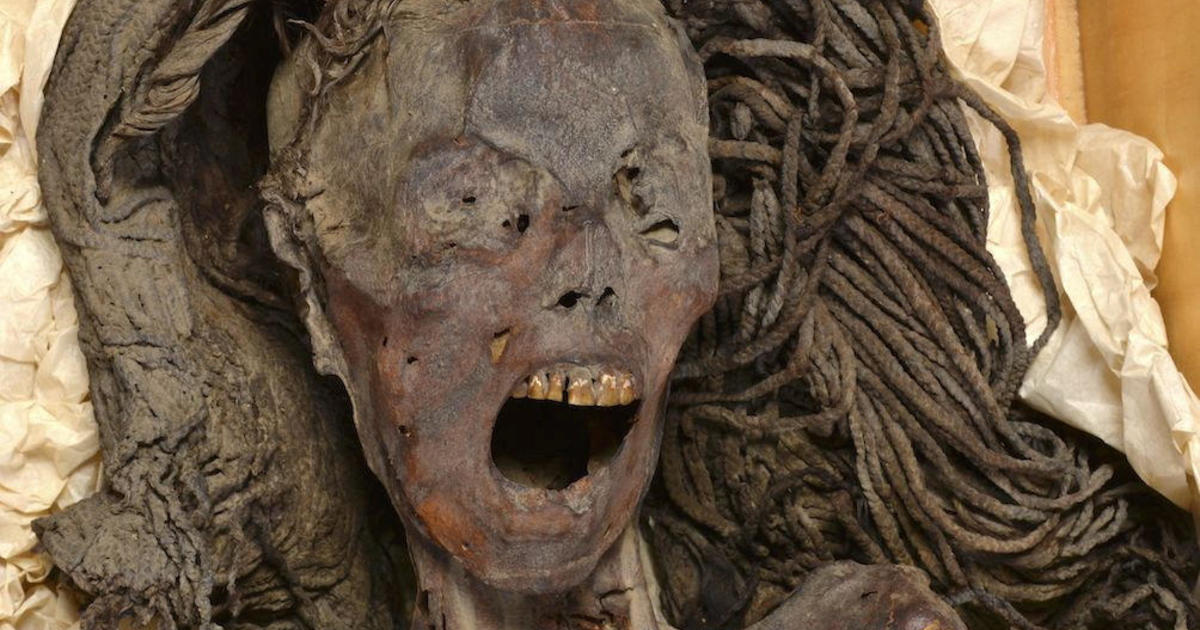
The mummy of an ancient Egyptian woman with her mouth wide open in what looks like an anguished shriek may have died “screaming from agony,” researchers say.
The unnamed woman mummy, discovered in a 1935 archeological expedition in Deir el-Bahari near Luxor, was kept in The Cairo Egyptian Museum and referred to as “Screaming Woman Mummy of the store of Kasr al Ainy.”
In an article in the journal Frontiers in Medicine, scientists said they used CT scans and other testing to examine whether the mummy had any pathological abnormalities and assess potential causes of death.
They found that the woman, who was around 48 years old at the time she died, had lost some teeth and lived with mild arthritis of the spine. Her body was embalmed about 3,500 years ago with high quality ingredients.
Ancient Egyptians mummified bodies because they believed preserving them after death secured a worthy existence in the afterlife. Usually, internal organs would be removed during the mummification process, but that did not take place with the “Screaming Woman.”
“In ancient Egypt, the embalmers took care of the dead body so it would look beautiful for the afterlife. That’s why they were keen to close the mouth of the dead by tying the jaw to the head to prevent the normal postmortem jaw drop,” lead researcher in the study, Cairo University radiology professor Sahar Saleem, told the Reuters news agency.
But this had not happened in the case of the “Screaming Woman.”
“This opened the way to other explanations of the widely opened mouth — that the woman died screaming from agony or pain and that the muscles of the face contracted to preserve this appearance at the time of death due to cadaveric spasm,” Saleem told Reuters, adding that, due to all of the unknowns around her history, the cause of her expression can’t be established with certainty.
Saleem told Reuters that cadaveric spasm is a poorly understood condition, where contracted muscles become rigid immediately after death.
Science & Environment
Fossil discovery in Greenland ice sheet reveals increased risk of sea level rise
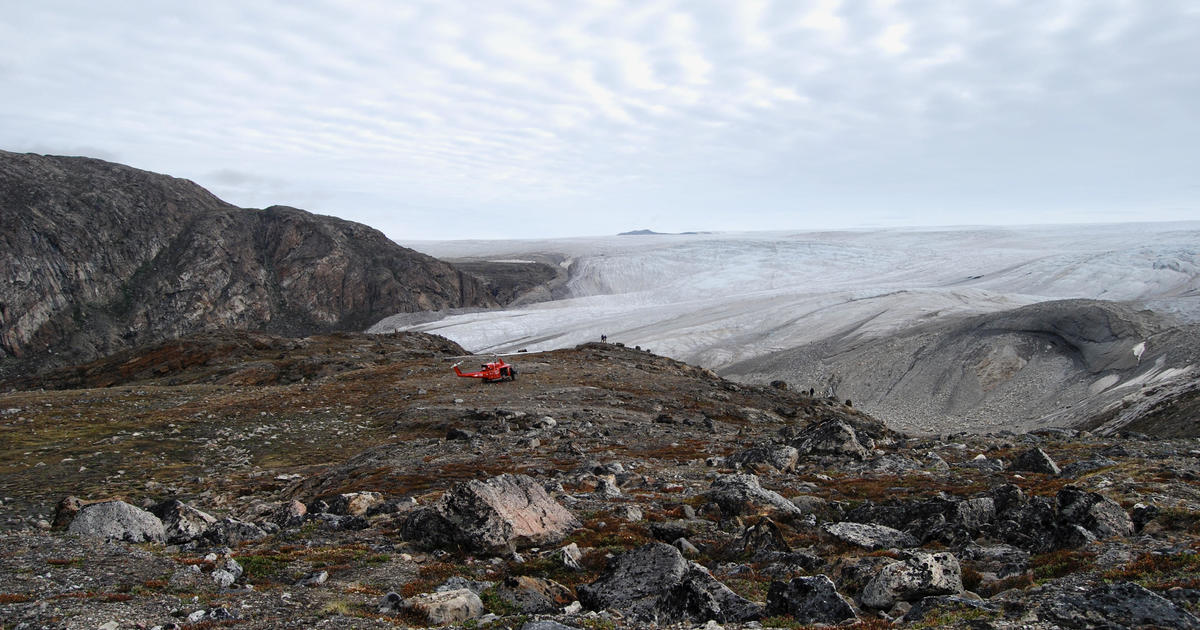
Greenland has melted before, and as the climate warms, it will melt again — this time leading to what scientists warn could be 20 to 25 feet of sea-level rise.
During one of the warm periods within the last 1.1 million years, the center, not just the edges, of Greenland’s massive ice sheet melted away, new research has found, giving way to a dry and barren “tundra landscape” that was home to various insects and plant life. The findings were shared in a new paper published today in the Proceedings of the National Academy of Sciences.
When the ice sheet initially melted, there were lower levels of greenhouse gasses in the atmosphere than there are today. Now with more carbon dioxide in the atmosphere, scientists say Greenland’s ice sheet is more susceptible to melting than previously thought.
“Greenland has been around for 2.7 million years with its ice,” said Paul Bierman, a scientist at the University of Vermont who co-led the new study. “Now there’s some evidence that this ice sheet is fragile.”
The researchers have been studying materials from beneath the hood of the Greenland ice sheet, the largest in the Northern hemisphere, since 2014. They examined sediment from the bottom of an ice core — dubbed GISP2 — extracted from two miles below the surface at the center of the ice sheet nearly 30 years ago.
The 1-ounce sample of sediment was filled with clues of Greenland’s past. Tiny little black specks, when put under the microscope, revealed an insect eye, an Arctic poppy seed, parts of an Arctic willow, and tiny bits of soil fungus and spike moss — what Bierman referred to as a “frozen ecosystem underneath the ice.”
According to researchers, the fossils provide “direct confirmation” that 90% of the ice sheet was once gone.
“Finding these fossils in the center of the ice sheet is unambiguous evidence that Greenland’s ice has disappeared [in the past],” said Bierman. “And once you lose the center of the ice sheet, you’ve lost it all.”
The findings supports what’s called the “fragile Greenland” hypothesis: that nature, outside of human influence, has caused the ice sheet to melt at least once since it formed, Bierman said.
At 656,000 square miles, the Greenland ice sheet currently covers around 80% of the island territory. To put that into perspective, it’s about three times the size of Texas.
NASA, which has mapped Greenland’s ice loss, says the sheet has “rapidly declined in the last several years,” prompting the global sea level to rise around 0.03 inches per year. Greenland’s melting ice mass is now the No. 1 driver of sea level rise, according to Bierman.
“In the early years of the climate warming, it was mountain glaciers that were doing most of the melting and adding water to the ocean,” he said. “Now it’s Greenland.”
While it could be a few thousand years before the entire Greenland mass melts, Bierman said, the consequences would be dire: hundreds of millions of people could lose their homes and businesses. Places we hold near and dear to our hearts would be lost.
“As I like to say when people ask me, why does it matter? I say think about your favorite beach. And then imagine your favorite beach with 25 feet of water on it,” Bierman said.
Science & Environment
Discovery of “hobbit” fossils suggests tiny humans roamed Indonesian islands 700,000 years ago

Twenty years ago on an Indonesian island, scientists discovered fossils of an early human species that stood at about 3 1/2 feet tall, earning them the nickname “hobbits.”
Now a new study suggests ancestors of the hobbits were even slightly shorter.
“We did not expect that we would find smaller individuals from such an old site,” said Yousuke Kaifu, co-author of the study, which was published on Tuesday in the journal Nature.
The original hobbit fossils date back to between 60,000 and 100,000 years ago. The new fossils were excavated at a site called Mata Menge, about 45 miles from the cave where the first hobbit remains were uncovered. The fossils were found on the top of a ribbon-shaped, pebbly sandstone layer in a small stream. They included exceptionally small teeth that possibly came from two individuals, researchers said.
In 2016, researchers suspected the earlier relatives could be shorter than the hobbits after studying a jawbone and teeth collected from the new site. Further analysis of a tiny arm bone fragment and teeth suggests the ancestors were a mere 2.4 inches shorter and existed 700,000 years ago.
“They’ve convincingly shown that these were very small individuals,” said Dean Falk, an evolutionary anthropologist at Florida State University who was not involved with the research.
Researchers have debated how the hobbits — named Homo floresiensis after the remote Indonesian island of Flores — evolved to be so small and where they fall in the human evolutionary story. They’re thought to be among the last early human species to go extinct.
Scientists don’t yet know whether the hobbits shrank from an earlier, taller human species called Homo erectus that lived in the area, or from an even more primitive human predecessor. More research — and fossils — are needed to pin down the hobbits’ place in human evolution, said Matt Tocheri, an anthropologist at Canada’s Lakehead University.
“This question remains unanswered and will continue to be a focus of research for some time to come,” Tocheri, who was not involved with the research, said in an email.
Science & Environment
NASA outlines backup plan to get Starliner crew back to Earth from International Space Station if Boeing ship can’t bring them home

As NASA debates the safety of Boeing’s Starliner spacecraft in the wake of multiple helium leaks and thruster issues, the agency is “getting more serious” about a backup plan to bring the ship’s two crew members back to Earth aboard a SpaceX Crew Dragon, officials said Wednesday.
In that case — and no final decisions have been made — Starliner commander Barry “Butch” Wilmore and co-pilot Sunita Williams would remain aboard the International Space Station for another six months and come down on a Crew Dragon that’s scheduled for launch Sept. 24 to carry long-duration crew members to the outpost.
Two of the four “Crew 9” astronauts already assigned to the Crew Dragon flight would be bumped from the mission and the ship would be launched with two empty seats. Wilmore and Williams then would return to Earth next February with the two Crew 9 astronauts.
Shortly before the Crew Dragon launch, the Starliner would undock from the station’s forward port and return to Earth under computer control, without any astronauts aboard. The Crew Dragon then would dock at the vacated forward port.
Two earlier Starliner test flights were flown without crews and both landed successfully. The current Starliner’s computer system would need to be updated with fresh data files, and flight controllers would need to brush up on the procedures, but that work can be done in time to support a mid September return.
If that scenario plays out, Wilmore and Williams would end up spending 268 days — 8.8 months — in space instead of the week or so they planned when they blasted off atop a United Launch Alliance Atlas 5 rocket on June 5.
Based on uncertainty about the precise cause of the thruster problems, “I would say that our chances of an uncrewed Starliner return have increased a little bit based on where things have gone over the last week or two,” said Ken Bowersox, NASA’s director of space operations.
“That’s why we’re looking more closely at that option to make sure that we can handle it.”
But he cautioned that no final decisions will be made on when — or how — to bring the Starliner crew home until the agency completes a top-level flight readiness review.
No date has been set, but it could happen by late next week or the week after.
“Our prime option is to return Butch and Suni on Starliner,” said Steve Stich, manager of NASA’s Commercial Crew Program. “However, we have done the requisite planning to make sure we have other options open. We have been working with SpaceX to ensure that they’re ready to (return) Butch and Suni on Crew 9 if we need that.
“Now, we haven’t approved this plan (yet). We’ve done all the work to make sure this plan is there … but we have not turned that on formally. We wanted to make sure we had all that flexibility in place.”
Before the Starliner was launched, NASA and Boeing engineers knew about a small helium leak in the spacecraft’s propulsion system. After ground tests and analysis, the team concluded the ship could be safely launched as is.
The day after launch, however, four more helium leaks developed and five aft-facing maneuvering thrusters failed to operate as expected. Ever since, NASA and Boeing have been carrying out data reviews and ground tests in an effort to understand exactly what caused both issues.
The Starliner uses pressurized helium to push propellants to the thrusters, which are critical to keeping the spacecraft properly oriented. That’s especially important during the de-orbit braking “burn” using larger rocket engines to slow the ship down for re-entry and an on-target landing.
To clear the Starliner for a piloted return to Earth, engineers must develop acceptable “flight rationale” based on test data and analyses that provides confidence the ship can make it through re-entry and landing with the required level of safety.
“The Boeing team (is) very confident that the vehicle could bring the crew home right now with the uncertainty we’ve got,” said Bowersox. “But we’ve got other folks that are probably a little more conservative. They’re worried that we don’t know for sure, so they estimate the risk higher and they would recommend that that we avoid coming home (on Starliner) because we have another option.
“So that’s a part of the discussion that we’re having right now. But again, I think both views are reasonable with the uncertainty band that we’ve got, and so our effort is trying to reduce that uncertainty.”
Boeing adamantly argues the Crew Dragon backup plan isn’t needed and that tests and analyses of helium leaks in the Starliner’s propulsion system and initial trouble with maneuvering thrusters show the spacecraft has more than enough margin to bring Wilmore and Williams safely back to Earth.
The helium leaks are understood, Boeing says, they have not gotten worse and more than enough of the pressurized gas is on board to push propellants to the thrusters needed to maneuver and stabilize the spacecraft through the critical de-orbit braking burn to drop out of orbit for re-entry and landing.
Likewise, engineers believe they now understand what caused a handful of aft-facing maneuvering jets to overheat and fire at lower-than-expected thrust during rendezvous with the space station, causing the Starliner’s flight computer to shut them down during approach.
Ground tests of a new Starliner thruster, fired hundreds of times under conditions that mimicked what those aboard the spacecraft experienced, replicated the overheating signature, which was likely caused by multiple firings during tests of the capsule’s manual control system during extended exposure to direct sunlight.
The higher-than-expected heating likely caused small seals in thruster valve “poppets” to deform and expand, the analysis indicates, which reduced the flow of propellant. The thrusters aboard the Starliner were test fired in space under more normal conditions and all operated properly, indicating the seals had returned to a less intrusive shape.
New procedures are in place to prevent the overheating that occurred during the rendezvous. Additional manual test firings have been ruled out, no extended exposure to the sun is planned and less frequent firings are required for station departure compared to rendezvous.
In a statement Wednesday, Boeing said, “We still believe in Starliner’s capability and its flight rationale. If NASA decides to change the mission, we will take the actions necessary to configure Starliner for an uncrewed return.”
The helium plumbing and thrusters are housed in the Starliner’s service module, which will be jettisoned to burn up in the atmosphere before the crew capsule re-enters for landing. As such, engineers will never be able to examine the hardware first hand to prove, with certainty, what went wrong.
At this point, that uncertainty appears to support bringing Wilmore and Williams back to Earth aboard the Crew Dragon. But it’s not yet a certainty.
“If we could replicate the physics in some offline testing to understand why this poppet is heating up and extruding and then why it’s contracting, that would give us additional confidence to move forward, to return Butch and Sonny on this vehicle,” Stich said.
“That’s what the team is really striving to do, to try to look at all the data and see if we can get a good physical explanation of what’s happening.”
In the meantime, the wait for a decision, one way or the other, drags on.
“In the end, somebody – some one person – designated to be the decision maker, that person has to come to a conclusion,” Wayne Hale, a former shuttle flight director and program manager, wrote in a blog post earlier this week.
“The engineers will always always always ask for more tests, more analysis, more time to get more information to be more certain of their conclusions. The decider also has to decide when enough has been done. The rub in all of this … is that it always involves the risk to human life.”
Hale concluded his post by saying: “I do not envy today’s decision makers, the ones weighing flight rationale. My only advice is to listen thoroughly, question effectively, ask for more data when necessary. But when it is time, a decision must be made.”
Science & Environment
Drones setting a new standard in ocean rescue technology
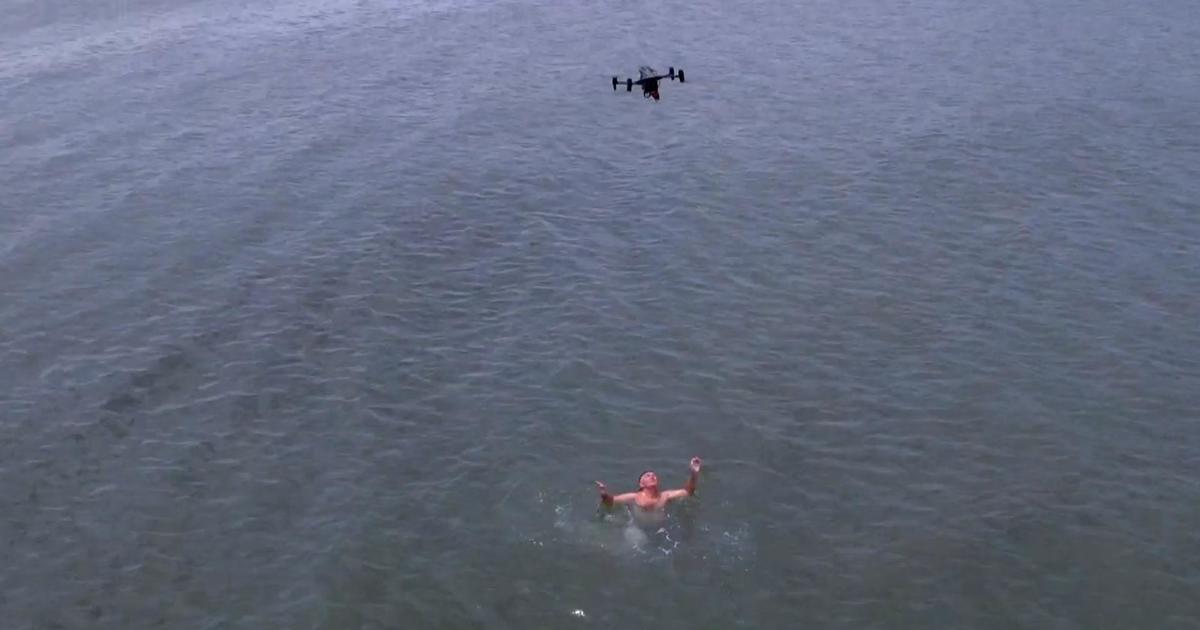
Last month, two young paddleboarders found themselves stranded in the ocean, pushed 2,000 feet from the shore by strong winds and currents. Thanks to the deployment of a drone, rescuers kept an eye on them the whole time and safely brought them aboard a rescue boat within minutes.
In North Carolina, the Oak Island Fire Department is one of a few in the country using drone technology for ocean rescues. Firefighter-turned-drone pilot Sean Barry explained the drone’s capabilities as it was demonstrated on a windy day.
“This drone is capable of flying in all types of weather and environments,” Barry said.
Equipped with a camera that can switch between modes — including infrared to spot people in distress — responders can communicate instructions through a speaker. It also can carry life-preserving equipment.
The device is activated by a CO2 cartridge when it comes in contact with water. Once triggered, it inflates into a long tube, approximately 26 inches long, providing distressed swimmers something to hold on to.
In a real-life rescue, after a 911 call from shore, the drone spotted a swimmer in distress. It released two floating tubes, providing the swimmer with buoyancy until help arrived.
Like many coastal communities, Oak Island’s population can swell from about 10,000 to 50,000 during the summer tourist season. Riptides, which are hard to detect on the surface, can happen at any time.
Every year, about 100 people die due to rip currents on U.S. beaches. More than 80% of beach rescues involve rip currents, if you’re caught in one, rescuers advise to not panic or try to fight it, but try to float or swim parallel to the coastline to get out of the current.
Oak Island Fire Chief Lee Price noted that many people underestimate the force of rip currents.
“People are, ‘Oh, I’m a good swimmer. I’m gonna go out there,’ and then they get in trouble,” Price said.
For Price, the benefit of drones isn’t just faster response times but also keeping rescuers safe. Through the camera and speaker, they can determine if someone isn’t in distress.
Price said many people might not be aware of it.
“It’s like anything as technology advances, it takes a little bit for everybody to catch up and get used to it,” said Price.
In a demonstration, Barry showed how the drone can bring a safety rope to a swimmer while rescuers prepare to pull the swimmer to shore.
“The speed and accuracy that this gives you … rapid deployment, speed, accuracy, and safety overall,” Price said. “Not just safety for the victim, but safety for our responders.”
-

 Sport9 hours ago
Sport9 hours agoJoshua vs Dubois: Chris Eubank Jr says ‘AJ’ could beat Tyson Fury and any other heavyweight in the world
-

 News1 day ago
News1 day agoYou’re a Hypocrite, And So Am I
-

 News10 hours ago
News10 hours agoIsrael strikes Lebanese targets as Hizbollah chief warns of ‘red lines’ crossed
-

 Sport9 hours ago
Sport9 hours agoUFC Edmonton fight card revealed, including Brandon Moreno vs. Amir Albazi headliner
-

 CryptoCurrency8 hours ago
CryptoCurrency8 hours agoEthereum is a 'contrarian bet' into 2025, says Bitwise exec
-

 Technology8 hours ago
Technology8 hours agoiPhone 15 Pro Max Camera Review: Depth and Reach
-

 Science & Environment12 hours ago
Science & Environment12 hours agoHow one theory ties together everything we know about the universe
-

 CryptoCurrency9 hours ago
CryptoCurrency9 hours ago2 auditors miss $27M Penpie flaw, Pythia’s ‘claim rewards’ bug: Crypto-Sec
-

 CryptoCurrency9 hours ago
CryptoCurrency9 hours agoArthur Hayes’ ‘sub $50K’ Bitcoin call, Mt. Gox CEO’s new exchange, and more: Hodler’s Digest, Sept. 1 – 7
-

 CryptoCurrency9 hours ago
CryptoCurrency9 hours agoTreason in Taiwan paid in Tether, East’s crypto exchange resurgence: Asia Express
-

 CryptoCurrency9 hours ago
CryptoCurrency9 hours agoLeaked Chainalysis video suggests Monero transactions may be traceable
-

 CryptoCurrency9 hours ago
CryptoCurrency9 hours agoJourneys: Robby Yung on Animoca’s Web3 investments, TON and the Mocaverse
-

 CryptoCurrency9 hours ago
CryptoCurrency9 hours agoLouisiana takes first crypto payment over Bitcoin Lightning
-

 CryptoCurrency9 hours ago
CryptoCurrency9 hours agoAre there ‘too many’ blockchains for gaming? Sui’s randomness feature: Web3 Gamer
-

 CryptoCurrency9 hours ago
CryptoCurrency9 hours agoCrypto whales like Humpy are gaming DAO votes — but there are solutions
-

 CryptoCurrency9 hours ago
CryptoCurrency9 hours agoHelp! My parents are addicted to Pi Network crypto tapper
-

 CryptoCurrency9 hours ago
CryptoCurrency9 hours ago$12.1M fraud suspect with ‘new face’ arrested, crypto scam boiler rooms busted: Asia Express
-

 CryptoCurrency9 hours ago
CryptoCurrency9 hours ago‘Everything feels like it’s going to shit’: Peter McCormack reveals new podcast
-

 Science & Environment12 hours ago
Science & Environment12 hours agoFuture of fusion: How the UK’s JET reactor paved the way for ITER
-

 CryptoCurrency9 hours ago
CryptoCurrency9 hours agoSEC sues ‘fake’ crypto exchanges in first action on pig butchering scams
-

 CryptoCurrency9 hours ago
CryptoCurrency9 hours agoFed rate cut may be politically motivated, will increase inflation: Arthur Hayes
-

 CryptoCurrency9 hours ago
CryptoCurrency9 hours agoDecentraland X account hacked, phishing scam targets MANA airdrop
-

 CryptoCurrency9 hours ago
CryptoCurrency9 hours agoCZ and Binance face new lawsuit, RFK Jr suspends campaign, and more: Hodler’s Digest Aug. 18 – 24
-

 CryptoCurrency9 hours ago
CryptoCurrency9 hours agoBitcoin miners steamrolled after electricity thefts, exchange ‘closure’ scam: Asia Express
-

 CryptoCurrency9 hours ago
CryptoCurrency9 hours agoCardano founder to meet Argentina president Javier Milei
-

 CryptoCurrency9 hours ago
CryptoCurrency9 hours agoCertiK Ventures discloses $45M investment plan to boost Web3
-

 CryptoCurrency9 hours ago
CryptoCurrency9 hours agoMemecoins not the ‘right move’ for celebs, but DApps might be — Skale Labs CMO
-

 CryptoCurrency9 hours ago
CryptoCurrency9 hours agoDorsey’s ‘marketplace of algorithms’ could fix social media… so why hasn’t it?
-

 CryptoCurrency9 hours ago
CryptoCurrency9 hours agoTelegram bot Banana Gun’s users drained of over $1.9M
-

 CryptoCurrency9 hours ago
CryptoCurrency9 hours agoLow users, sex predators kill Korean metaverses, 3AC sues Terra: Asia Express
-

 CryptoCurrency9 hours ago
CryptoCurrency9 hours agoSEC asks court for four months to produce documents for Coinbase
-

 CryptoCurrency9 hours ago
CryptoCurrency9 hours agoBlockdaemon mulls 2026 IPO: Report
-

 News7 hours ago
News7 hours ago“Beast Games” contestants sue MrBeast’s production company over “chronic mistreatment”
-

 Technology3 days ago
Technology3 days agoYouTube restricts teenager access to fitness videos
-

 Science & Environment12 hours ago
Science & Environment12 hours ago‘Running of the bulls’ festival crowds move like charged particles
-

 Politics23 hours ago
Politics23 hours agoWhat is the House of Lords, how does it work and how is it changing?
-

 MMA8 hours ago
MMA8 hours agoUFC’s Cory Sandhagen says Deiveson Figueiredo turned down fight offer
-

 MMA8 hours ago
MMA8 hours agoDiego Lopes declines Movsar Evloev’s request to step in at UFC 307
-

 Football8 hours ago
Football8 hours agoNiamh Charles: Chelsea defender has successful shoulder surgery
-

 Football8 hours ago
Football8 hours agoSlot's midfield tweak key to Liverpool victory in Milan
-

 Science & Environment12 hours ago
Science & Environment12 hours agoRethinking space and time could let us do away with dark matter
-

 CryptoCurrency9 hours ago
CryptoCurrency9 hours agoSEC settles with Rari Capital over DeFi pools, unregistered broker activity
-

 News7 hours ago
News7 hours agoBrian Tyree Henry on voicing young Megatron, his love for villain roles
-

 Health & fitness2 days ago
Health & fitness2 days agoWhen Britons need GoFundMe to pay for surgery, it’s clear the NHS backlog is a political time bomb
-

 Science & Environment22 hours ago
Science & Environment22 hours agoQuantum to cosmos: Why scale is vital to our understanding of reality
-

 Science & Environment23 hours ago
Science & Environment23 hours agoQuantum time travel: The experiment to ‘send a particle into the past’
-

 Science & Environment9 hours ago
Science & Environment9 hours agoWe may have spotted a parallel universe going backwards in time
-

 CryptoCurrency9 hours ago
CryptoCurrency9 hours agoTelegram CEO cannot leave France, OpenSea receives Wells notice, and more: Hodler’s Digest, Aug. 25 – 31
-

 CryptoCurrency9 hours ago
CryptoCurrency9 hours agoFive crypto market predictions that haven’t come true — yet
-

 CryptoCurrency9 hours ago
CryptoCurrency9 hours agoSolana unveils new Seeker device, says it’s not just a ‘memecoin phone’
-

 CryptoCurrency9 hours ago
CryptoCurrency9 hours agoCrypto scammers orchestrate massive hack on X but barely made $8K
-

 CryptoCurrency9 hours ago
CryptoCurrency9 hours agoBitcoiners are ‘all in’ on Trump since Bitcoin ’24, but it’s getting risky
-

 CryptoCurrency9 hours ago
CryptoCurrency9 hours agoReal-world asset tokenization is the crypto killer app — Polygon exec
-

 Science & Environment12 hours ago
Science & Environment12 hours agoJupiter’s stormy surface replicated in lab
-
Politics12 hours ago
Owen Paterson loses ECHR appeal against report that preceded downfall | Owen Paterson
-

 CryptoCurrency9 hours ago
CryptoCurrency9 hours agoBinance CEO says task force is working ‘across the clock’ to free exec in Nigeria
-

 CryptoCurrency9 hours ago
CryptoCurrency9 hours agoElon Musk is worth 100K followers: Yat Siu, X Hall of Flame
-

 CryptoCurrency9 hours ago
CryptoCurrency9 hours agoBitcoin price hits $62.6K as Fed 'crisis' move sparks US stocks warning
-

 CryptoCurrency9 hours ago
CryptoCurrency9 hours agoBeat crypto airdrop bots, Illuvium’s new features coming, PGA Tour Rise: Web3 Gamer
-

 CryptoCurrency9 hours ago
CryptoCurrency9 hours agoBitcoin bull rally far from over, MetaMask partners with Mastercard, and more: Hodler’s Digest Aug 11 – 17
-

 CryptoCurrency9 hours ago
CryptoCurrency9 hours agoVonMises bought 60 CryptoPunks in a month before the price spiked: NFT Collector
-

 CryptoCurrency9 hours ago
CryptoCurrency9 hours agoVitalik tells Ethereum L2s ‘Stage 1 or GTFO’ — Who makes the cut?
-

 CryptoCurrency9 hours ago
CryptoCurrency9 hours agoEthereum falls to new 42-month low vs. Bitcoin — Bottom or more pain ahead?
-
Business8 hours ago
Thames Water seeks extension on debt terms to avoid renationalisation
-
Business8 hours ago
How Labour donor’s largesse tarnished government’s squeaky clean image
-
Business7 hours ago
UK hospitals with potentially dangerous concrete to be redeveloped
-
Business7 hours ago
Axel Springer top team close to making eight times their money in KKR deal
-

 News7 hours ago
News7 hours agoSean “Diddy” Combs denied bail again in federal sex trafficking case
-

 News7 hours ago
News7 hours agoSean “Diddy” Combs denied bail again in federal sex trafficking case in New York
-

 News7 hours ago
News7 hours agoBrian Tyree Henry on his love for playing villains ahead of “Transformers One” release
-

 News7 hours ago
News7 hours agoBrian Tyree Henry on voicing young Megatron, his love for villain roles
-

 News5 hours ago
News5 hours agoWoman sues Florida sheriff after mistaken arrest lands her in jail on Christmas
-

 News11 hours ago
News11 hours agoChurch same-sex split affecting bishop appointments
-

 Politics2 days ago
Politics2 days agoTrump says he will meet with Indian Prime Minister Narendra Modi next week
-

 Science & Environment12 hours ago
Science & Environment12 hours agoPhysicists have worked out how to melt any material
-

 Politics24 hours ago
Politics24 hours agoKeir Starmer facing flashpoints with the trade unions
-

 CryptoCurrency2 days ago
CryptoCurrency2 days agoBitcoin reclaims $60K and ‘this time is different,’ says analyst
-

 Health & fitness2 days ago
Health & fitness2 days agoWhy you should take a cheat day from your diet, and how many calories to eat
-

 Technology10 hours ago
Technology10 hours agoFivetran targets data security by adding Hybrid Deployment
-
News2 days ago
Why is XRP price up today?
-

 Science & Environment1 day ago
Science & Environment1 day agoElon Musk’s SpaceX contracted to destroy retired space station
-

 Money1 day ago
Money1 day agoWhat estate agents get up to in your home – and how they’re being caught
-
News9 hours ago
Freed Between the Lines: Banned Books Week
-
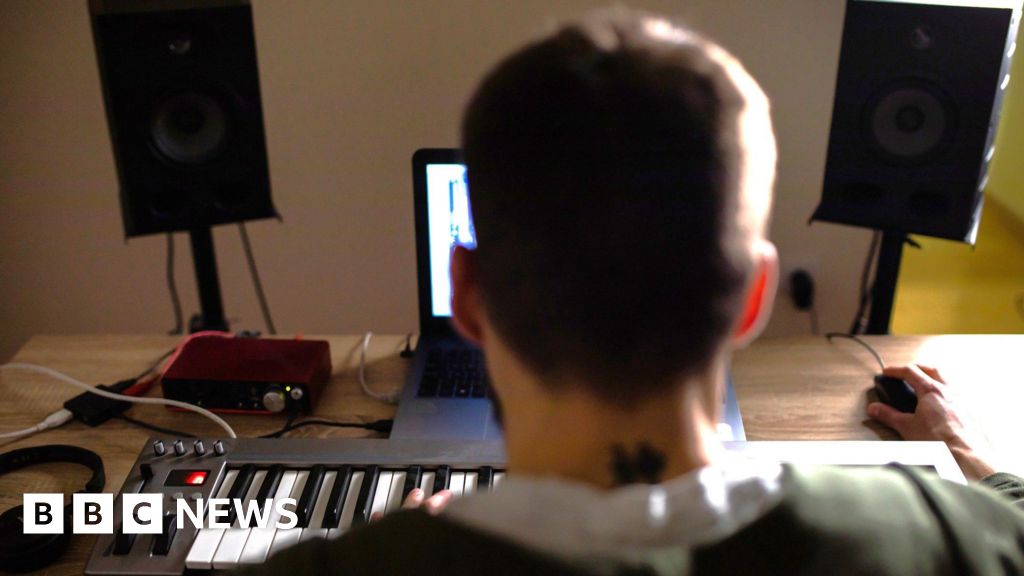
 Technology3 days ago
Technology3 days agoMusician charged with using bots to boost streaming revenue
-

 Sport9 hours ago
Sport9 hours agoUFC’s Dan Ige feels confident after Diego Lopes dominates Brian Ortega
-

 News3 days ago
News3 days agoStory Behind Ryan Murphy’s FX Show About Aaron Hernandez
-

 Football8 hours ago
Football8 hours agoFootball Daily
-

 Science & Environment12 hours ago
Science & Environment12 hours agoHow to wrap your head around the most mind-bending theories of reality
-

 Fashion Models8 hours ago
Fashion Models8 hours agoMiranda Kerr nude
-

 Fashion Models8 hours ago
Fashion Models8 hours ago“Playmate of the Year” magazine covers of Playboy from 1971–1980
-

 News3 days ago
News3 days agoDid the Pandemic Break Our Brains?
-

 Fashion Models8 hours ago
Fashion Models8 hours agoNuméro Switzerland
-

 Health & fitness2 days ago
Health & fitness2 days ago11 reasons why you should stop your fizzy drink habit in 2022
-

 Politics7 hours ago
Politics7 hours agoLabour MP urges UK government to nationalise Grangemouth refinery
-

 Science & Environment15 hours ago
Science & Environment15 hours agoHow Peter Higgs revealed the forces that hold the universe together
-

 News4 days ago
News4 days agoIndia Now Moves from Deliberations to Deliverables on Crimes Against Women
-

 Technology2 days ago
Technology2 days agoWhat will future aerial dogfights look like?
-

 Science & Environment10 hours ago
Science & Environment10 hours agoOdd quantum property may let us chill things closer to absolute zero
-

 Science & Environment17 hours ago
Science & Environment17 hours agoQuantum forces used to automatically assemble tiny device
-

 Entertainment7 hours ago
Entertainment7 hours ago“Jimmy Carter 100” concert celebrates former president’s 100th birthday










You must be logged in to post a comment Login